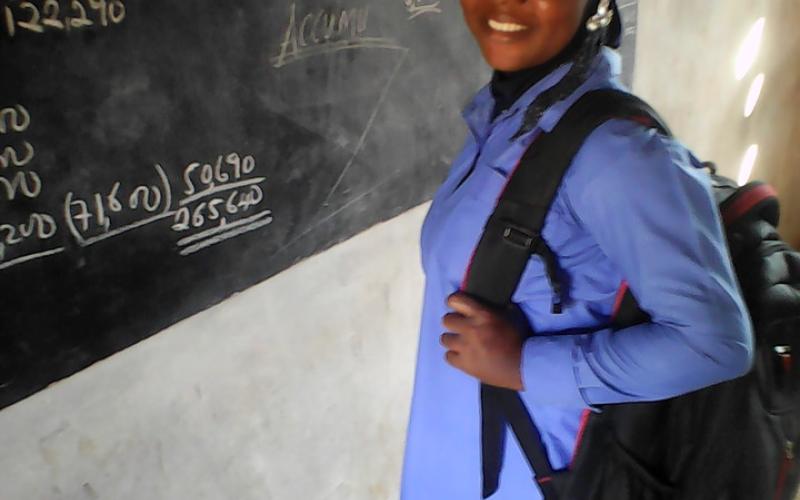
Recently I saw an article shared by someone on Facebook about the Mall of Africa— the 1.4 million square foot mall that opened last month in Waterfall City, South Africa. Construction began in this conveniently located suburb of Johannesburg in 2012, and the final cost to completion came in at around $330 million (US). The project employed 3,078 people and by January 2016, 10.41 million hours of labor had been invested, and now that the mall is open there have been hundreds of jobs added to the economy.(4)
Although the mall (which is not even the biggest mall in South Africa) is impressive, what got my attention was the comment attached to the article by the person who shared it. He was questioning “what part of Africa is poor?” The comment implied that the people of Africa must no longer need help if they can build a mall “bigger than 70+ rugby fields,” and the writer—seemingly irritated—asked “them to stop with the dollar a day commercials.”
If you grew up in America you’ve probably seen the “dollar a day” commercials this person was referring to. I have not seen many lately, but I am sure they are still around—at least I hope they are because the beneficiaries of these commercials still need help.
These commercials, along with National Geographic magazine covers depicting the harsh living conditions in Africa, seemed far more common when I was a child. Maybe I was paying more attention back then or maybe it's because we are no longer a captive audience that is limited to 13 TV channels, but now that I am older I rarely see these types of ads anymore. It seems ironic that these ads reached me at a time when I was much less capable of helping than I am now.
But the commercials from my youth did not go unnoticed and they may have actually had a lasting impact, for better or for worse. The images from these ads have etched a stereotype into my mind—the idea that all of Africa is poor and suffering. I admit that in the past I have been guilty of applying this stereotype to Africa as a whole. Honestly, until I found Develop Africa earlier this year, the challenges (and accomplishments) confronted by the people of Africa were not even a blip on my radar.
So, I understand how easy it is to temporarily forget what we learned in grade school—Africa is a continent consisting of many countries, each with its own economy and each with its own challenges. I can understand why, after reading an article about a $330 million shopping mall, a person might think that the people of Africa no longer need our help and generosity. He, too, may have temporarily forgotten that South Africa does not represent every country on the world’s second largest continent. Like an earlier version of myself, he may not know that over 620 million people do not have electricity in the developing areas of Africa.(3) Like me, the extent of his knowledge about South Africa might have come from the Discovery Channel's Shark Week.
The construction of such a massive mall may represent some degree of economic optimism in South Africa (at least when construction began), but what does it mean for the rest of Africa? There are certainly countries in Africa that are doing better than others—but we should not pigeonhole all African countries into the same economic category, or any category for that matter. Unfortunately, despite what the recent development of a new mall in South Africa might have you believe, there are still people suffering in Africa. It may be a cliché, but there are still people living on less than what many of us, including myself, spend on a cup of coffee each day.
But the person who shared the article on Facebook asked a legitimate question. He wanted to know “what part of Africa is still poor?” Well, the most recent data from The World Bank shows that approximately 42% of the people in Sub-Saharan Africa are living on less than $1.90 a day. That statistic actually indicates a 15% percent improvement over the last 25 years, but there are still at least 400 million people living in unimaginable poverty.(2)
The following statistics compare how a few African countries are doing economically, and hopefully answer the question that has been posed. Just for context, the US ranks 19 of 230 countries with a per capita GDP of $56,300.
Gross Domestic Product (GDP) at Purchasing Power Parity (PPP) exchange rates (in US Dollars), rounded to the nearest tenth: (1)
2015 Estimated GDP = $724 billion (average per capita = $13,400) – South Africa ranks 116 of 230 in the CIA’s World Fact Book GDP ranking.
2015 Estimated GDP = $9.8 billion (average per capita = $1,600) – Sierra Leone ranks 215 of 230 in the CIA’s World Fact Book GDP ranking.
2015 Estimated GDP = $3.8 billion (average per capita = $900) – Liberia ranks 225 of 230 in the CIA’s World Fact Book GDP ranking.
2014 Estimated GDP = $5.8 billion (average per capita = $400) – Somalia ranks 229 of 230 in the CIA’s World Fact Book GDP ranking.
If you like this article you may also like: "The Media's Problematic Portrayal of Africa"
Sources:
(1) https://www.cia.gov/library/publications/resources/the-world-factbook/wfbExt/region_afr.html
(4) http://www.msn.com/en-za/money/markets/gautengs-mall-of-africa-to-open-on-28-april/ar-BBrm7Vc
updated statistics on 5/18/2016

